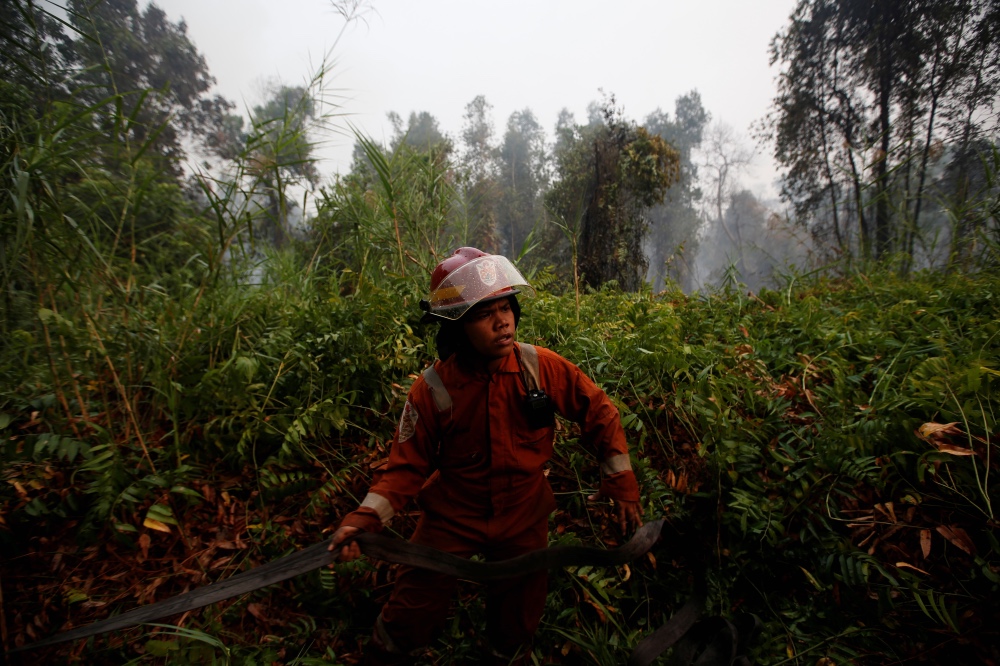Kuala Lumpur, Malaysia
Thomson Reuters Foundation
Thousands of volunteers fighting forest fires in Indonesia will receive a boost in funding that could help stem air pollution and reduce emissions, according to a United Nations official.
About 7,000 farmers have been trained to tackle fires since 2013 in a pioneering United Nations-backed project aimed at saving tropical forests and carbon-rich peatlands in Indonesia – among the world’s largest – from ruin.

Bimpi Permata Restu, 18, who is a volunteer at Greenpeace’s Forest Fire Prevention, holds a hose as he prepares to extinguish forest fires in Pulang Pisau regency near Palangka Raya, Central Kalimantan province, Indonesia, on 13th September. PICTURE: Reuters/Willy Kurniawan
But the fires, often linked to slash-and-burn practices to clear areas for palm oil, timber and farming, have continued to rage, causing thick haze to drift over parts of Southeast Asia.
Air pollution caused by forest fires this year was the worst since 2015, according to the World Resources Institute, a US-based environmental think-tank.
The threat posed by the fires – made worse by climate change – has prompted the UN to help expand the community-based fire fighters scheme, according to Johan Kieft, a UN Environment Programme official in Jakarta.
“These fire-brigades were effectively farmers, and what we will do now is align them with…government operations,” Kieft told the Thomson Reuters Foundation by phone.
Linking the legions of volunteers – often the first responders to fires – with government forestry agencies and plantation owners could put forest blazes out more swiftly, said Kieft.
He pledged to commit a further $US2 million to the $US5 million project over the next two years.
For the first ten months of this year, fires burned at least 1.6 million hectares of land across Indonesia – an area the size of Beijing – said the Indonesia-based Center for International Forestry Research.
Ancient peat soils, which are particularly flammable when dry, contain huge quantities of carbon in the form of organic matter, which accumulates over thousands of years and provides nutrients for plant growth.
Indonesia hosts some 36 percent of the world’s tropical peatlands, which contain up to 20 times more carbon than non-peat mineral soils, said Hidayah Hamzah of the World Resources Institute Indonesia.
“The catastrophic land fires that periodically engulf large swaths of Sumatra, Kalimantan, and most recently, Papua, are concentrated in peatlands that have been converted to industrial oil palm and timber plantations,” she said.
The multi-billion dollar timber and palm oil industries deny setting fires to clear land and say they are working with local communities to tackle the problem of illegal fires.
The UN-backed project known as GAMBUT aims to reduce forest and peatland fires and the air pollution and greenhouse gas emissions they produce, and help the Indonesian government develop fire-prevention policies.





